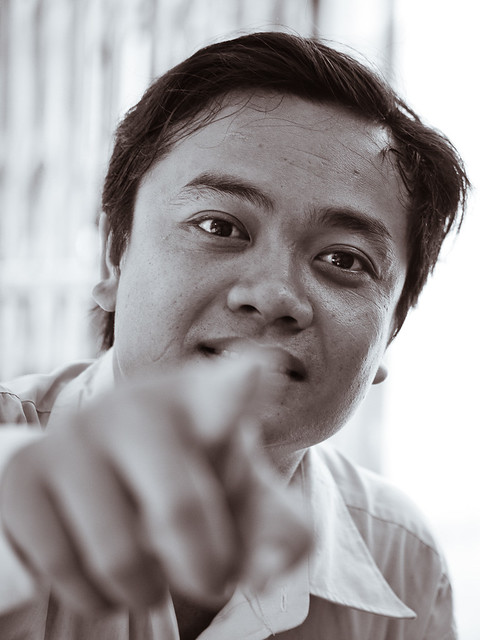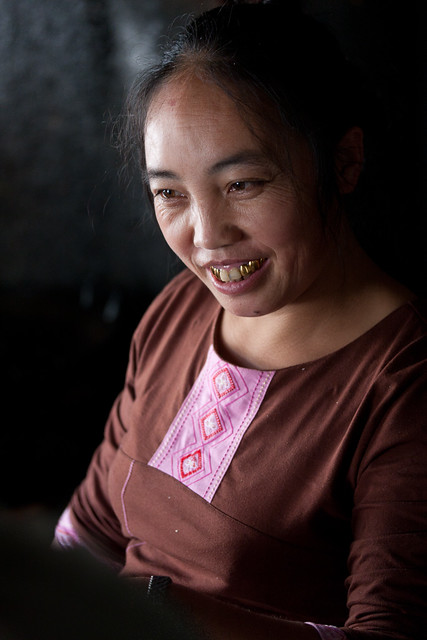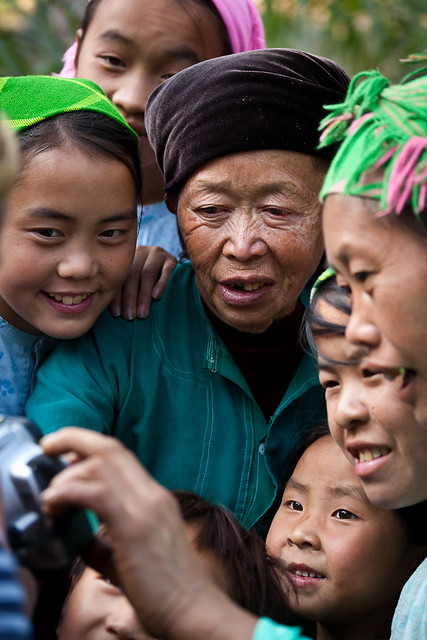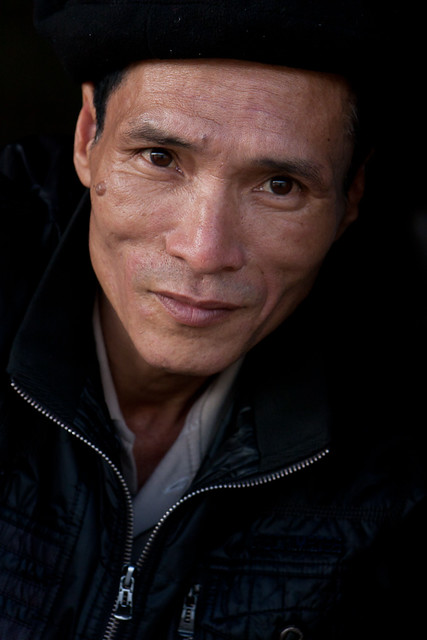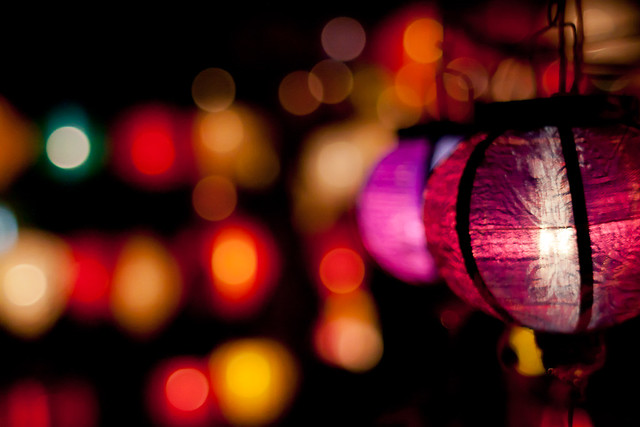
I kept the motorcycle and its riders at the same spot in the frame, so it is mostly sharp. But because I moved the camera to achieve that, the background is blurred (streaked, to be exact).
When I show a panning shot to another photographer, I often get comments about how difficult it is. That's nice to hear, but here's a little secret: it isn't.
Panning is easy?
Really. Think of it this way: you're extremely good at tracking without a camera. You do it every time you look at a moving object. Now just do it with a camera in front of your face. You will not need very much practice; it's really the same thing. (It's a little harder with an LCD screen at arms length; I find that a camera with a viewfinder makes this a lot easier.)Once you're tracking your subject, the only remaining thing is to press the shutter at the right moment. You know, composition and the like. This can be hard with a mobile phone or a cheap point and shoot camera, as they have an annoying delay between pressing the button and taking the picture. With a responsive camera, this too is no big problem.
So why don't mine come out?
Because you're not shooting enough. The problem is that to get a bit of blur in the background, your shutter speed needs to be quite slow. Typically, too slow to get reliably sharp subjects. You will get some unwanted motion blur, be it due to a little wobble, your heartbeat, or not perfectly tracking the subject. To illustrate this, the image above is shot at 1/30th of a second. For a static subject and the same lens the rule of thumb is to use 1/50th or faster. So the shutter speed is too slow for a static shot, and for panning, you're doing something even more difficult: move the camera smoothly and at the right speed to track the subject.That's why a lot of panning images don't come out. Simply too much blur, because the shutter speed is so low. The solution is simple: shoot a lot of images. Most will be garbage, but mostly likely there'll be few acceptable ones too.
So that's it, this is the key skill of panning: shoot A LOT. Much more than usual. And there will be some gems. Just don't show all the garbage to anyone and you'll be admired for your amazing skills:-)
Over time, your skill will improve, and so will your hit rate. Or better, raise your standards with your skill level, so you keep a similar hit rate but with higher quality keepers.

OK, so how do I do this?
Gear and settings:- Preferably, use a responsive camera (no long shutter lag) with a viewfinder. Not required, but it saves on practice and improves your hit rate.
- Set the camera to a mode where you determine the shutter speed (typically, T or Tv); of course, full manual will work if you prefer that. If your camera does not offer that level of control, you're mostly out of luck. All automatic modes will try to avoid slow shutter speeds, so you'll have to shoot in circumstances dark enough to force a suitable shutter speed.
- Set the camera to continuous auto-focus, if possible. Don't worry too much about that - nobody will notice if the focus is a little off. Motion blur and the likely small aperture will hide that.
- I usually stick to single shot mode and try to time it well. Burst modes (where the camera rapidly fires off several shots) generally don't work out for me. They make tracking much harder because the viewfinder or screen blacks out or freezes each time it takes a shot. And unless you have a very fast burst mode, timing your shots to hit the subject in the sweet spot can be hard too. One case where I find this a price worth paying is for running animals or people. Their posture changes a lot between shots in a burst, and I found it very hard to catch the right moment by hand. Your mileage may vary, so give burst mode a try and see if and when it works for you.
Start out simple.
- Pick a simple subject - you want predictable and straight movement, and not too many distractions around. Something like cars or bikes on a straight road.
- Pick a fixed focal length. Zooming in and out will make it a little harder to get the framing right - remember that the subject will probably be coming closer or moving away! It will also affect the optimal shutter speed. So keep it simple at first, and don't zoom. Start with a middle of the road focal length (say 25-50mm on a crop DSLR, 40-80 on a full frame DSLR).
- Pick one shutter speed. Say 1/30th of a second. Try it out, and adjust as needed. If everything is one messy blur, pick a faster speed (say, 1/50th). If the background isn't very blurry, pick a slower speed (say, 1/20th).
- Pick the spot where you want to capture the subject. Get in a stable position as usual, and then twist your upper body towards your approaching subject.
- Pick and focus on your subject before it gets there, and track it a little past there. And obviously, press the shutter button when it passes the right spot.
As you get better at this (easy doesn't mean no practice) you can start complicating things. Using different focal lengths. Try wide angle or tele. Try subjects coming around a corner. Try it at night, with or without flash, as in the images below. Squat down for a low perspective as in the top shot here (squatting makes the tracking harder). Try smooth backgrounds; try busy and colourful ones. Try athletes or animals, where the posture (and thus the precise timing) is crucial. There is no end.
And remember, nobody needs to know you threw out 100 shots to get that one nice one.
This is a 0.3 second exposure, hence the massive blur. I've used flash here to get a sharp image of the motorcycle. If you look closely though, you can see the blur of the motorcycle created throughout the entire 0.3s exposure.
A night shot. It doesn't need to be perfectly sharp to work! This is 1/4th of a second, and I'm using my tripod as an improvised monopod (legs folded in).











